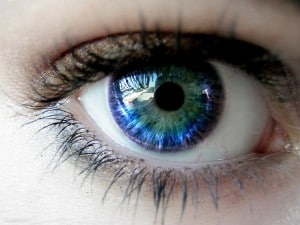Lake Plains Eye Center your eye health vision center offers the following recommendations for maintain healthy eyes.
Good eye health and eye care are crucial to preserving your vision, treating eye problems early, and protecting your overall health. Your eyes are the “gateway to your soul,” and they can also reveal common or serious health problems — such as diabetes, cardiovascular disease, cancer, and HIV. Learn about eye exams and when to get them, how to practice good eye health, and how to treat and prevent eye conditions, from pinkeye and blepharitis to glaucoma and cataracts.
Everyone should schedule a yearly eye appointment.
What a baby sees?
At birth, infants are very sensitive to light but cannot focus on objects or see colors very well. Their vision continues to develop during the first few months. By 1 month, they can focus on objects up to 3 feet away. By 4 months, they can see across a room. Also around 4 months, they can see a full range of colors and shades.
First Eye Exams
A pediatrician may screen a child’s vision during routine exams in his first year of life. Some experts recommend a vision screening with an eye doctor at 6 months and a complete eye exam at age 3. Vision problems like nearsightedness or lazy eye may be apparent by that age. An early vision exam may include tests for visual sharpness and overall eye health.
Nearly 1 in 4 school-age children has vision problems, most commonly nearsightedness. However, only about one-third of students get eye exams before starting school. Some experts recommend an eye exam before starting first grade, and then every two years. Because eyes develop as a child grows, nearsightedness typically gets worse until about age 20.
What Is “Lazy Eye”?
Amblyopia or “lazy eye” (shown) affects 2 to 3 of every 100 children. It occurs when nerve signals between the brain and one eye do not work properly. Most children can be successfully treated with a patch over the stronger eye or with other methods. Crossed eyes happen when both eyes do not line up. Patching, special glasses, or even surgery may help.
Computers and Eye Strain
Prolonged use of digital devices like computer monitors, smart phone screens, and video games may result in eye strain, dryness, and fatigue. Luckily, using such devices does not seem to have permanent effects on the eyes. To prevent eye strain, adjust the computer monitor so that it’s 2 feet in front of you. Use desk lighting to reduce glare. Take a break every hour. Spend a few minutes looking at something much farther away than the monitor.
Adults, Protect Your Eyes!
Healthy adults younger than 40 usually enjoy stable vision. To maintain your vision and overall eye health, wear sunglasses in bright sunlight. Wear protective gear when playing sports or working with power tools, machinery, or chemicals — both at work and at home.
Oh, No! It’s Time for “Readers”
The need for reading glasses is a classic sign of middle age. By the time you reach your mid-40s, you may need help reading and performing other close-up tasks. This vision change is called presbyopia, and it’s normal. You can wear reading glasses, bifocals, or special contact lenses to correct your vision. Sometimes laser surgery can help, too.
What Happens in Presbyopia
Before the age of 40, the natural lens of the eye is very flexible. This flexibility helps the lens focus on objects that are close up or far away. But as we get older, the lens tends to lose its flexibility. Gradually this reduces the ability to see up-close objects. If you have presbyopia, you might have to hold an object like a book or a menu farther away from your eyes to see it clearly.
Age-related Diseases and Vision
Some diseases, like diabetes and high blood pressure, may have an effect on your vision and eye health. Diabetes is a leading cause of new cases of blindness in adults. People with diabetes may develop retinopathy (shown, damage to blood vessels in the retina). High blood pressure can damage the eye’s blood vessels and nerves. It can cause permanent vision loss. When you take care of your overall health by eating well and not smoking, your eyes benefit.
Cataracts and Glaucoma
Cataracts (shown) and glaucoma can happen at any age, but are most often associated with people over 60. A cataract is a clouding of the eye’s natural lens. It can easily be removed and replaced by a special lens in the eye during surgery. Glaucoma is a deterioration of the eye’s nerve over time. It is often accompanied by increased pressure in the eye. Glaucoma is treated with eye drops or surgery to decrease eye pressure.
Slowing Down Macular Degeneration
Age-related macular degeneration (AMD) is more common in people over 60. It can cause a partial loss of vision. “Wet” AMD is associated with new, unwanted, leaky blood vessels in the eye. It can be treated with medicine. “Dry” AMD is a slower process and does not have specific treatment. Vision rehabilitation may help a person adjust to life with AMD.
Nutrition and Vision
A healthy diet can help maintain your overall eye health. And some foods may be especially good for eyes, too. Omega-3 fatty acids and vitamins C and E may promote eye health. So eat citrus fruits like oranges and tangerines, green, leafy vegetables, nuts, and fatty fish. Eating fish and green, leafy vegetables may prevent age-related macular degeneration, too.


